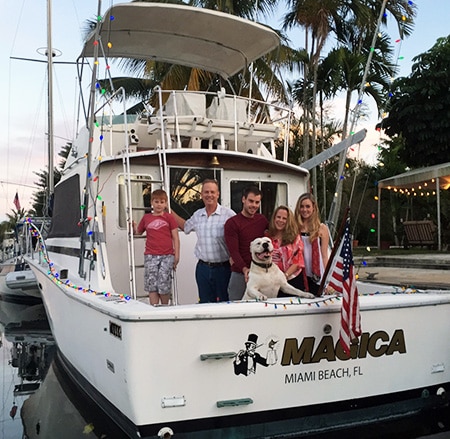An Overview of Marine Corrosion in Boats and How You Can Handle It: Info About Rust Treatment for Boats
Corrosion is best described as the process metal goes through when changing its chemical state. Rust is the kind of corrosion people are most familiar with, but there are more types of corrosion out there.
First, it is important to understand exactly what is happening during the corrosion process.
Iron ore is two iron atoms bonded with three oxygen atoms. The ore is refined to create iron, or combined with other elements to form steel. But the iron naturally wants to return to its original state. Over long periods of time, metal’s exposure to water (a mixture of hydrogen and oxygen) can cause it to oxidize and rust, which is essentially the process of the iron returning to its original state.
In boats, a common issue is galvanic corrosion. This is an electrochemical reaction between at least two metals. One of the metals must be more chemically active (less stable) than the other metals in the area for there to be a chemical reaction. If two or more dissimilar metals are connected, either by touching each other or by a metal part or wire and/or they are immersed together in a conductive solution (a liquid capable of transferring electricity), they can be subject to galvanic corrosion.
In a boat setting, saltwater, freshwater with high mineral counts and freshwater that has been greatly polluted are all extremely conductive solutions, especially if the water is warm. For this reason, boats in warmer climates are more likely to experience corrosion than boats in cooler climates, but all boats will be subject to this type of corrosion at some point.
As the most common example, consider an aluminum lower motor unit with a stainless steel propeller. Aluminum is more chemically active than stainless steel. These two systems working together in conductive water can lead to one or both rusting over time.
How to spot galvanic corrosion
The first telltale sign of galvanic corrosion is paint beginning to blister below the water line. As the corrosion progresses, the metal will expose itself even more, forming a white powdery substance and eventually becoming pitted while the metal is eaten away.
If you have attached stainless steel components such as propellers, trim planes or steering aids, these attachments will only serve to accelerate the process of galvanic corrosion, because you are adding more dissimilar metal to drive a faster chemical reaction with the aluminum. This isn’t to say you can avoid galvanic corrosion by avoiding adding stainless steel parts—just that you can significantly slow down the process.
If you spot galvanic corrosion on your boat, it is important that you take action as quickly as possible. First, if it is relatively early in the corrosion process, you can use a rust remover spray to get the rust out of there and slow down the corrosion. But if it has reached an advanced stage, you may need to replace parts of your boat.
For more information about rust treatment for boats, including our signature rust remover spray, contact Magica, Inc. today.


